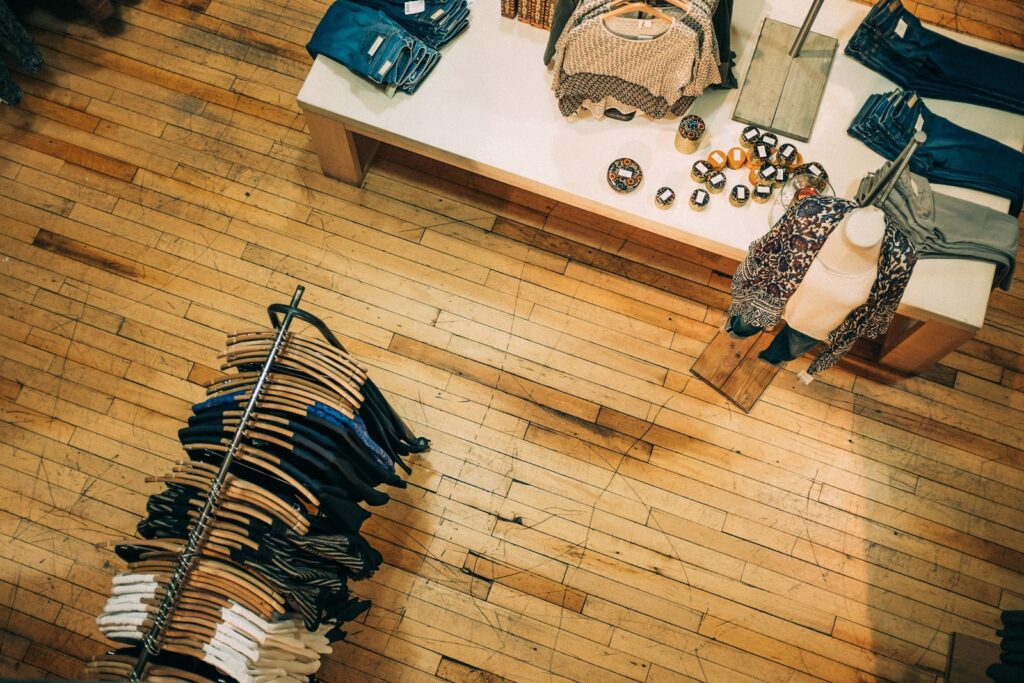The retail industry has always been at the forefront of innovation, continually evolving to meet the changing needs and desires of consumers. Today, this constant evolution has become even more imperative as the retail landscape faces a transformative shift due to technological advancements and changes in consumer behaviour.
From the rise of e-commerce to the increasing demand for a personalised customer experience, retailers are forced to adapt quickly or risk becoming obsolete. This article aims to shed light on some of the key trends shaping the future of the retail industry.
The Shift Towards Omni-Channel Retail
Omni-channel retailing, a seamless approach to the consumer experience through all available shopping channels, is no longer a buzzword but a necessity. Today’s tech-savvy consumers demand the convenience of shopping from anywhere, anytime, and on any device.
As a result, brick-and-mortar retailers are now integrating their physical stores with their online platforms, creating a fluid, seamless experience for consumers who can ‘click and collect,’ return online purchases in-store, or use mobile apps in-store for a more personalised shopping experience.
Importance of Innovative Design and Layout in Retail

As we move towards an era of experiential retail, the physical design and layout of stores have never been more critical. An innovative, well-thought-out store design can enhance the shopping experience, encourage greater footfall, and increase dwell time, ultimately leading to higher sales. It is here that retail shopfitting comes into play.
Professional shopfitters, like 3 Rock, can create bespoke retail environments that reflect a brand’s identity and values, engage customers, and optimise the use of space for product display and customer movement. The careful selection and placement of lighting, colours, signage, fixtures, and fittings can all influence a customer’s perception of the store and their buying decisions.
The Increasing Importance of Customer Experience
In today’s highly competitive retail environment, merely offering quality products at competitive prices is not enough. Consumers now place greater value on the overall shopping experience, from the moment they walk into the store to the after-sales service.
Retailers that can offer a superior, personalised customer experience are more likely to create loyal customers who will return time and again. Elements such as store ambience, customer service, and product assortment all play a vital role in creating an unforgettable customer experience.
The Role of Sustainability in the Retail Industry
Sustainability has moved from the fringes to the mainstream in the retail industry, driven by increasing consumer awareness of environmental issues and the demand for responsible retail practices.
Retailers are now under pressure to demonstrate their commitment to sustainability, whether through eco-friendly products, sustainable packaging, or ethical sourcing and supply chain practices. Moreover, sustainability is no longer just about ticking the corporate social responsibility box; it’s also a driver of innovation and a way to build a strong, authentic brand image that resonates with consumers.
Adoption of Emerging Technologies
Emerging technologies such as Artificial Intelligence (AI), Augmented Reality (AR), Virtual Reality (VR), and Internet of Things (IoT) are reshaping the retail industry. These technologies are being used to enhance the customer experience, streamline operations, and improve decision making.
For instance, AI can be leveraged to provide personalised recommendations to customers, automate inventory management, and provide valuable insights into consumer behaviour. AR and VR technologies can provide immersive shopping experiences, allowing customers to ‘try on’ clothes or visualise how furniture might look in their homes before buying. IoT can connect different elements of the retail environment, from smart shelves that alert staff when they need to be restocked, to beacons that provide personalised deals to customers in-store. Retailers who embrace these technologies can gain a competitive edge and meet the evolving demands of their customers.
The Impact of Social Commerce
Social commerce – the integration of social media and shopping – is another significant trend in the retail industry. Social media platforms have evolved into powerful retail platforms, offering a new channel for retailers to reach their customers. Through shoppable posts and stories, customers can now purchase products directly from their social media feeds, creating a seamless and convenient shopping experience.
Retailers are also leveraging social media to engage with their customers, build brand awareness, and gain valuable insights into consumer preferences. Moreover, user-generated content, such as reviews, testimonials, and videos shared through social media can influence purchasing decisions and help build trust in a brand.
The Growth of Mobile Commerce
The proliferation of smartphones and improvements in mobile technology have fuelled the growth of mobile commerce or m-commerce. Consumers are increasingly using their mobile devices to research products, compare prices, and make purchases. In response, retailers are optimising their websites for mobile, developing mobile apps, and offering mobile payment options to provide a smooth and convenient shopping experience.
Moreover, mobile devices are also being used to enhance the in-store shopping experience. For instance, customers can use their mobile devices to scan QR codes for product information, use store maps, or receive personalised offers. By integrating mobile technology into their retail strategy, retailers can engage with their customers more effectively and drive sales.
Conclusion
The retail industry is in the midst of a significant transformation, driven by a combination of technological advancements and shifting consumer behaviours. Amid these changes, the need for retailers to offer a seamless, personalised shopping experience, demonstrate a commitment to sustainability, and create engaging, innovative retail spaces, is more important than ever.
By staying abreast of these trends and adapting to them, retailers can not only survive in this ever-changing landscape but thrive and grow. To achieve this, they will need to partner with experts in areas such as retail shopfitting, who can help them create the kind of retail environments that today’s discerning consumers demand. With such a strategy in place, the future of retail looks bright, innovative, and consumer-focused



